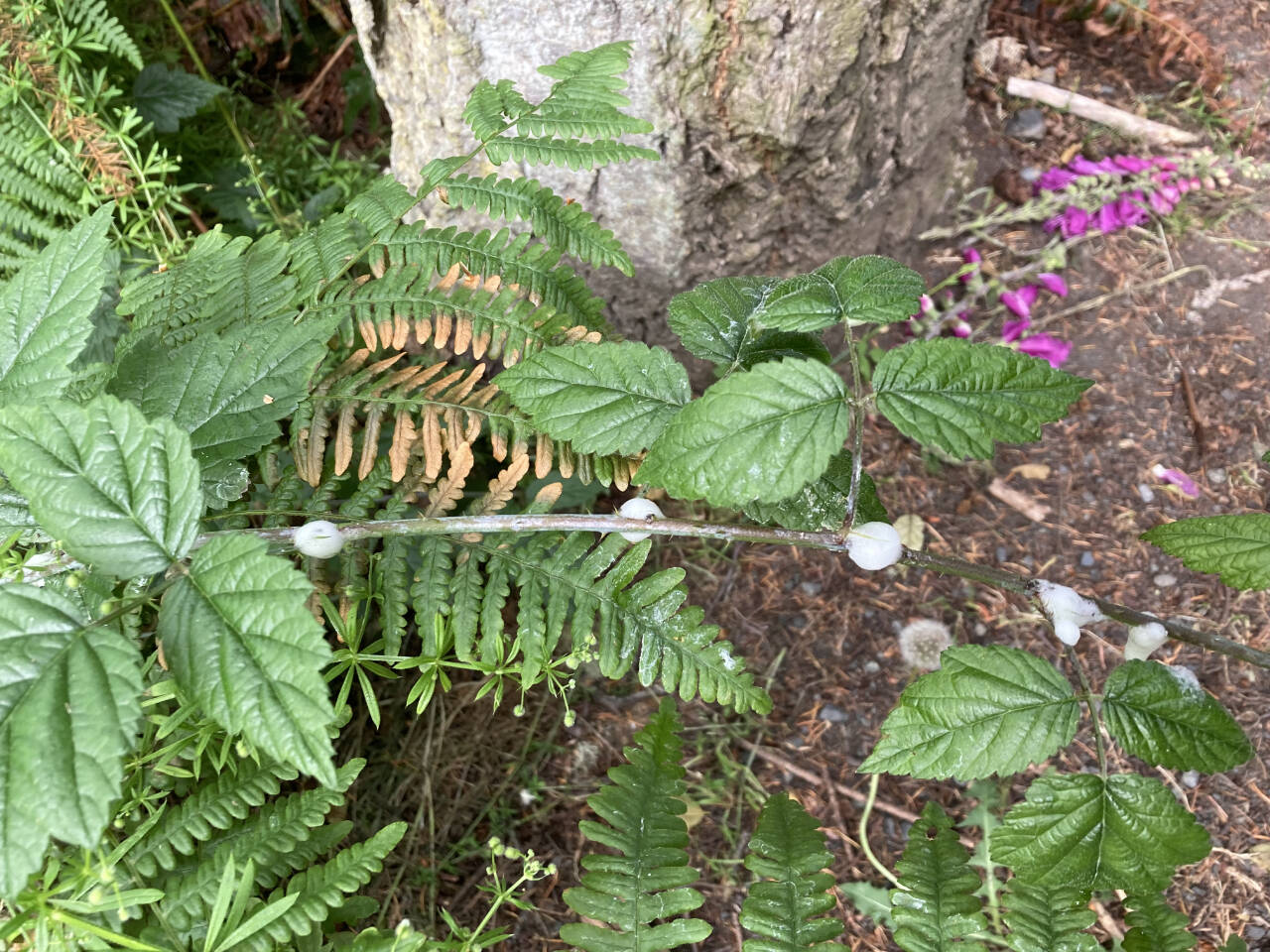Question: What is the white, foamy stuff on my oregano plant? Nearby dewberries are also affected. (see photos)
Answer: The white, frothy masses on your oregano and wild blackberries are caused by nymphs — an immature stage — of the meadow spittlebug (Philaenus spumarius).
Spittlebug nymphs suck out plant juices and excrete a white, frothy substance that protects them from predators and keeps them from drying out. The excrement resembles spit, giving this insect its common name, but actually comes from the other end of the bug (i.e., its anus).
Spittlebug nymphs appear in mid-to-late spring and feed on many different types of plants. After five to eight weeks of feeding, the nymphs mature into winged adults and fly or jump to nearby grassy areas or broadleaf weeds. In the fall, adult females lay clusters of eggs in plant debris or on the leaves and stems of host plants. The eggs overwinter and hatch in spring to start the cycle over again.
Spittlebugs usually cause minimal damage to plants and produce only one generation per year. As a result, most gardeners just choose to ignore them.
If the foamy masses are objectionable to you, you can dislodge the nymphs with a strong blast of water or pick them off by hand. (The latter seems a little disgusting to me!)
Pesticides are not effective against spittlebugs, as the nymphs are protected by the foam.
Because adults lay eggs that overwinter, cleaning up a planting in the fall might help control the population size the following growing season.
Question: Should I cut off the first blossoms that appear on my flowering annuals?
Answer: Whether you grow them from seed or purchase them as starts, most flowering annuals benefit from being pinched back shortly after planting to remove the growing tips and first flowers.
Removal of the growing tips temporarily stops the production of auxin, a plant hormone that encourages upward growth. The result is that the plant develops multiple side branches instead of one central stem, which ultimately leads to more flowers.
Removal of flowers also allows the plant to temporarily redirect its energy from flower production to vegetative and root growth. With a stronger root system, the plant will be sturdier and better equipped to handle rain, drought and wind.
To pinch back a plant, locate a spot on the main stem an inch or two below the growing tip and where a set of leaves join the stem (called a leaf node). A pair of tiny buds is often visible just above the node.
Pinch or cut off the main stem above that spot being careful not to damage the new buds; these buds will produce two new lateral stems once the tip of the main stem is removed.
Pinching back a plant has drawbacks. It delays the appearance of flowers for a couple of weeks and results in smaller albeit more numerous blossoms. In addition, the plant will not get as tall as it would have if you had not pinched it.
Annuals that are multi-stemmed respond well to pinching such as asters, calendulas, branching celosia, coleus, cosmos, dahlias, gomphrena, impatiens, marigolds, petunias, sage, salvia, snapdragons, strawflowers, sweet peas and zinnias.
Do not pinch campanula, cockscomb, delphinium, dill, foxglove, larkspur, statice, stock or single-stemmed sunflowers. Doing so can result in the total loss of flowering stalks for the season.
As your plant grows, regularly remove flowers as they fade (deadhead them) unless you plan to save the seeds. Also remove leggy branches by cutting them back to just above a leaf node. Both actions will keep your plants flowering and neater looking throughout the growing season.
Jeanette Stehr-Green is a WSU-certified Clallam County Master Gardener.
Java-heads rejoice!
Find out how the coffee you love is grown, roasted, exported and enjoyed. Join Master Gardener Margery Whites for the Green Thumb Education Series presentation “A History of Coffee,” set for noon-1 p.m. on Thursday, July 27, at the Port Angeles Library, 2210 S. Peabody St.



